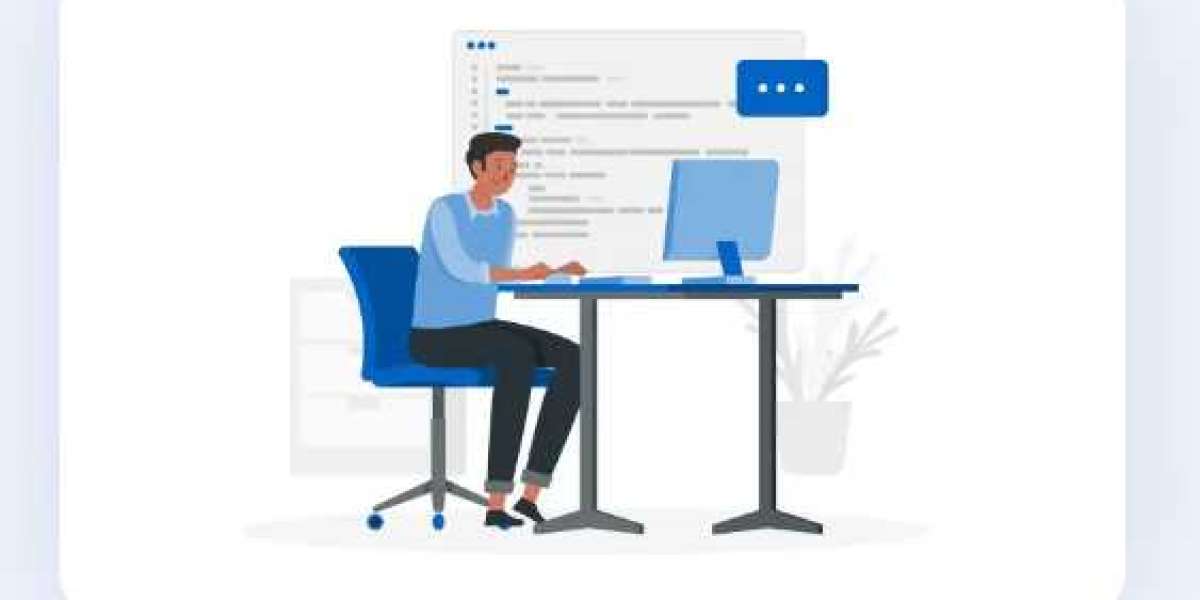Introduction
Software as a Service (SaaS) has transformed how businesses and individuals interact with software. This delivery model allows users to access applications over the internet without the need for local installations or extensive hardware infrastructure. SaaS apps are scalable, cost-effective, and provide continuous updates, making them an attractive option for many organizations. However, developing a SaaS application involves a complex, multi-stage process that requires careful planning and execution. This comprehensive guide explores the entire lifecycle of SaaS app development, from initial concept through to launch and ongoing maintenance.
1. Understanding SaaS
1.1 What is SaaS?
Software as a Service (SaaS) is a software distribution model where applications are hosted by a provider and made available to customers via the internet. Unlike traditional software, which is purchased and installed on individual devices, SaaS applications are accessed through a web browser and are typically billed on a subscription basis. This model eliminates the need for users to handle updates, maintenance, or infrastructure management.
1.2 Benefits of SaaS
- Cost Efficiency: SaaS eliminates the need for upfront investments in hardware and software. Costs are often predictable and managed through subscription fees.
- Scalability: SaaS platforms can easily scale up or down based on user needs and business growth.
- Accessibility: Users can access SaaS applications from any device with an internet connection, enhancing flexibility and mobility.
- Automatic Updates: SaaS providers handle all updates and maintenance, ensuring that users always have access to the latest features and security patches.
- Reduced IT Burden: With SaaS, businesses can reduce the strain on their IT departments, as the service provider manages most of the technical aspects.
2. The SaaS App Development Process
Developing a SaaS app involves several critical stages. Each phase must be carefully managed to ensure the final product meets user needs and business objectives.
2.1 Ideation and Conceptualization
Market Research
Understanding the market is crucial for developing a successful SaaS app. Conduct thorough research to identify:
- Target Audience: Determine who your potential users are and what their needs and pain points might be.
- Competitor Analysis: Analyze existing competitors to understand their strengths and weaknesses and identify opportunities for differentiation.
- Market Trends: Stay informed about current trends in technology and user behavior to ensure your app aligns with market demands.
Defining the Value Proposition
Your SaaS app should address a specific problem or need within your target market. Define:
- Core Problem: Clearly articulate the problem your app will solve.
- Unique Selling Proposition (USP): Identify what sets your app apart from competitors and why users would choose it over other options.
Feature Set and Requirements
Outline the key features and functionalities your app will offer. Consider:
- Essential Features: Include core functionalities that are critical for solving the problem.
- Nice-to-Have Features: List additional features that enhance user experience but are not critical for the app’s primary function.
- User Stories and Use Cases: Create detailed user stories and use cases to guide the development process and ensure that the app meets user needs.
2.2 Planning and Design
Wireframing and Prototyping
Wireframes and prototypes help visualize the app’s user interface (UI) and user experience (UX):
- Wireframes: Develop wireframes to outline the layout and structure of the app’s interface.
- Prototypes: Create interactive prototypes to simulate the user experience and gather feedback before development begins.
Technology Stack
Selecting the right technology stack is critical for the app’s performance and scalability:
- Front-End Technologies: Choose technologies for building the user interface. Popular options include HTML, CSS, JavaScript, and frameworks like React or Angular.
- Back-End Technologies: Select server-side technologies and programming languages such as Node.js, Python, Ruby on Rails, or PHP.
- Database Management: Decide on the database management system, such as MySQL, PostgreSQL, MongoDB, or SQL Server.
- Cloud Services: Choose cloud providers like AWS, Google Cloud, or Azure for hosting and managing your application.
Architecture Design
Design the app’s architecture to ensure scalability and reliability:
- Microservices Architecture: Consider breaking the app into smaller, independent services that can be developed, deployed, and scaled individually.
- Database Design: Plan the database schema to efficiently handle data storage and retrieval.
- API Integrations: Define how the app will interact with other services and systems via APIs.
2.3 Development
Front-End Development
Develop the user interface based on wireframes and prototypes:
- UI Implementation: Translate design mockups into functional UI components using front-end technologies.
- Responsive Design: Ensure the app is accessible and usable on various devices and screen sizes.
Back-End Development
Build the server-side logic and infrastructure:
- Server-Side Logic: Implement the core functionalities, including data processing, user authentication, and business logic.
- Database Integration: Set up database interactions to handle data storage and retrieval.
- API Development: Develop APIs to enable communication between the front end and back end, as well as with external services.
Testing
Testing is essential to ensure the app’s functionality and performance:
- Unit Testing: Test individual components or functions to verify their correctness.
- Integration Testing: Test how different components work together to ensure seamless functionality.
- System Testing: Conduct end-to-end testing to validate the entire application against requirements.
- User Acceptance Testing (UAT): Involve real users in testing to gather feedback and identify any usability issues.
2.4 Deployment
Cloud Hosting
Choose a cloud hosting provider for deploying your app:
- Platform Selection: Select a cloud platform such as AWS, Google Cloud, or Azure based on your app’s requirements and budget.
- Deployment Configuration: Set up servers, load balancers, and other infrastructure components to support your app.
Continuous Integration and Continuous Deployment (CI/CD)
Implement CI/CD practices to streamline the development and deployment process:
- Automated Builds: Automate the build process to ensure consistent and reliable deployments.
- Automated Testing: Integrate automated testing to catch issues early and ensure quality.
- Continuous Deployment: Deploy changes regularly to production with minimal manual intervention.
Monitoring and Maintenance
After deployment, ongoing monitoring and maintenance are crucial:
- Performance Monitoring: Use monitoring tools to track app performance, uptime, and user behavior.
- Error Reporting: Implement error tracking to identify and resolve issues quickly.
- Regular Updates: Continuously update the app to address bugs, add new features, and improve performance.
2.5 Post-Launch
Customer Support
Provide robust customer support to assist users and address their concerns:
- Support Channels: Offer multiple support channels, such as email, chat, and phone.
- Knowledge Base: Create a comprehensive knowledge base or FAQ section to help users find answers to common questions.
Feedback Collection
Gather feedback from users to guide future development:
- Surveys and Reviews: Use surveys and review platforms to collect user opinions and suggestions.
- Usage Analytics: Analyze user behavior to identify areas for improvement and prioritize enhancements.
Security and Compliance
Ensure the app adheres to security standards and regulatory requirements:
- Data Protection: Implement measures to protect user data and ensure compliance with regulations such as GDPR or CCPA.
- Security Audits: Conduct regular security audits to identify and address potential vulnerabilities.
3. Key Considerations for SaaS App Development
3.1 Scalability
Scalability is essential for handling growth and maintaining performance:
- Vertical Scaling: Increase the resources of existing servers to handle more load.
- Horizontal Scaling: Add more servers or instances to distribute the load and enhance capacity.
3.2 Security
Security is a top priority for SaaS applications, as they often handle sensitive data:
- Data Encryption: Encrypt data in transit and at rest to protect it from unauthorized access.
- Access Controls: Implement strong authentication and authorization mechanisms.
- Regular Security Patches: Apply security updates and patches to address vulnerabilities.
3.3 User Experience (UX)
A positive user experience is crucial for user satisfaction and retention:
- Usability: Ensure the app is intuitive and easy to navigate.
- Performance: Optimize loading times and responsiveness to enhance user experience.
- Customization: Provide options for users to personalize their experience.
3.4 Pricing and Monetization
Develop a pricing strategy that aligns with your business model and market:
- Subscription Models: Offer various subscription tiers with different levels of features and pricing.
- Freemium: Provide a basic version of the app for free with the option to upgrade to premium features.
- Usage-Based Pricing: Charge users based on their usage or consumption of resources.
4. Best Practices for SaaS App Development
4.1 Agile Development
Adopt Agile methodologies to facilitate iterative development and rapid response to changes:
- Scrum: Use Scrum to manage development in sprints, with regular reviews and adjustments.
- Kanban: Implement Kanban to visualize workflow and manage tasks efficiently.
4.2 Collaboration and Communication
Foster effective communication and collaboration among development teams and stakeholders:
- Project Management Tools: Use tools like Jira, Trello, or Asana to manage tasks and track progress.
- Regular Meetings: Conduct regular meetings to discuss progress, address issues, and align on goals.
4.3 Documentation
Maintain comprehensive documentation to support development and future maintenance:
- Technical Documentation: Document the architecture, APIs, and codebase for reference and future development.
- User Documentation: Provide user guides, tutorials, and FAQs to assist users in navigating the app.
4.4 Continuous Improvement
Continuously improve the app based on user feedback and evolving market demands:
- Feature Enhancements: Regularly add new features and functionalities to meet user needs.
- Performance Optimization: Continuously optimize performance to ensure a seamless user experience.
Conclusion
SaaS app development is a multifaceted process that requires careful planning, execution, and ongoing management. From understanding the core principles of SaaS to navigating the development lifecycle and addressing key considerations, this guide provides a comprehensive overview of what it takes to build a successful SaaS application. By following best practices and focusing on scalability, security, user experience, and continuous improvement, you can create a SaaS app that meets user needs and achieves business goals.
Embarking on a SaaS app development journey can be both challenging and rewarding. With the right approach and commitment to excellence, you can develop a product that not only stands out in the market but also delivers lasting value to your users.








